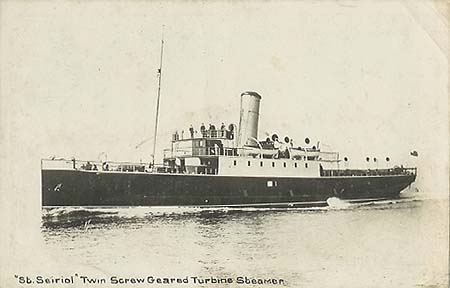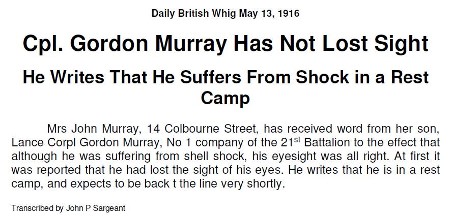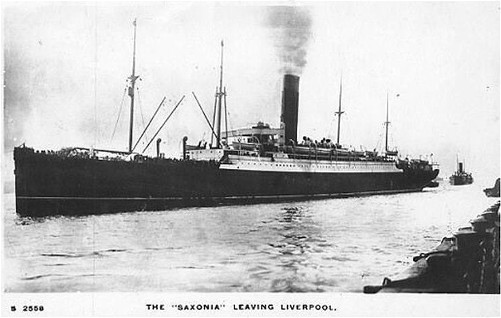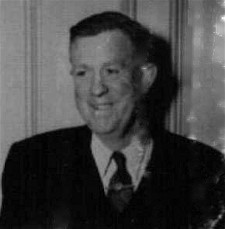|
Jan 8, 1892
|
Born in Arnprior, Ontario to John and Jessie (nee
Fraser) Murray
|
|
May 21, 1907
|
Volunteered for service in the Princess of Wales’
Own Rifles
Ø Number 847
Ø Posted to No. 7 Company
Ø Occupation given as Piano
Maker
|
|
Nov 11, 1914
|
Attested into the 21st Battalion in Kingston, Ontario
Ø Number 59686 (temporary number 97)
Ø Next of kin given as John Murray, father, 497 Barrie St.,
Kingston, Ontario
Ø Previous occupation given as Fireman
o Later noted as Fireman – Fire Fighter
Ø Previous military experience given as 7 years in the 14th
Regiment Princess of Wales’ Own Rifles in Kingston
Ø Religion given as Church of England
Ø Posted to “A” Company
The 21st Battalion trained in the Kingston, Ontario
area through the winter of 1914-15.
|
|
Feb 6, 1915
|
Appointed to the provisional rank of Lance
Corporal with pay
|
|
May 6, 1915
|
Embarked the RMS Metagama in Montreal, Quebec

|
|
May 15, 1915
|
Disembarked in Devonport, England and the
battalion proceeded to the West Sandling Camp, near Hythe, Kent to continue
training
|
|
Jul 1, 1915
|
Confirmed in the rank of Lance Corporal
|
|
Sep 14, 1915
|
Embarked the St. Seiriol in Folkestone

|
|
Sep 15, 1915
|
Disembarked in Boulogne, France and the battalion
proceeded to St. Omer
|
|
Feb 25, 1916
|
Admitted to the No. 5 CFA (Canadian Field
Ambulance) with a diagnosis that reads Appendicitis
|
|
Mar 3, 1916
|
Transferred to the No. 6 Canadian Field Ambulance
and admitted to the division rest station there and the diagnosis was changed
to read Enteritis
|
|
Mar 12, 1916
|
Discharged from hospital care and rejoined the 21st
Battalion resting in La Clytte, Belgium
|
|
Apr 19, 1916
|
While on a work party repairing front line trenches, Private
Murray was knocked unconscious by the explosion of a nearby artillery shell.
Admitted to the No. 6 Canadian Field Ambulance while still
unconscious with a diagnosis that reads Shell Shock
|
|
Apr 22, 1916
|
Transferred to the No. 5 Canadian Field Ambulance
with a diagnosis that reads Lumbago and Shell Shock.
|
|
Apr 24, 1916
|
Transferred to the division rest station at the
No. 4 Canadian Field Ambulance at Mont des Cats, France where the diagnosis
was changed to read Neurasthenia
|
|
Apr 29, 1916
|
Transferred to the No. 5 CCS (Casualty Clearing
Station)
|
|
May 1, 1916
|
Transferred via the No. 23 AT (Ambulance Train)
and admitted to the No. 8 Stationary Hospital in Wimereux, France
|
|
May 3, 1916
|
Transferred to the No. 5 CCD (Canadian
Convalescent Depot)
In Boulogne
|
|

|
|
Jun 11, 1916
|
Declared to be unfit for combat duty and
discharged to the Marlboro Base Details in Boulogne, France
|
|
Jun 18, 1916
|
Joined the CBD (Canadian Base Depot) in the
Rouelles Camp, Havre, France
|
|
Jul 22, 1916
|
Invalided to England and transferred to the CCAC
(Canadian Casualty Assembly Centre) in Folkestone
|
|
Jul 25, 1916
|
Attached to the 39th Reserve Battalion
for 8 weeks of Physical Training at the Monks Horton Hospital
|
|
Feb 27, 1917
|
Appointed to the rank of Acting Sergeant with pay
while employed at the St. Leonard’s Hospital as a Physical Training
Instructor
|
|
Mar 12, 1917
|
Transferred to the Eastern Ontario Regimental
Depot and attached to the 3rd CCD (Canadian Command Depot)
|
|
May 4, 1917
|
Taken on permanent strength of the St. Leonard’s
Hospital
|
|
Jun 15, 1917
|
Taken On Strength the permanent staff of 3rd
Canadian Command Depot
|
|
Sep 3, 1917
|
Transferred to the 6th Reserve
Battalion in Seaford and attached to the Garrison Gym Staff in Seaford
|
|
Sep 29, 1917
|
Ceased to be attached to the Garrison Gym Staff
|
|
Nov 14, 1917
|
Transferred to the EORD (Eastern Ontario
Regimental Depot) and attached to the CDD (Canadian Discharge Depot) in
Buxton pending return to Canada as an Instructor
|
|
Nov 17, 1917
|
Transferred to the CAGS (Canadian Army Gymnastics
Staff) with the rank of Sergeant and embarked the SS Saxonia in Liverpool

|
|
Nov 30, 1917
|
Disembarked in Halifax, Nova Scotia and proceeded
to Toronto, Ontario where he was attached to the Hart House for duty as a Physical
Trainer
|
|
Sep 30, 1918
|
Married to Margaret Mary McKee in Kingston,
Ontario
It is noted that his religion was changed to
Roman Catholic prior to the marriage
|
|
Jan 27, 1919
|
Ceased to be attached to Hart House and proceeded
to Military District No. 3 in Kingston for duty as a Remedial Instructor at
the Queen’s Military Hospital
|
|
Mar 1, 1919
|
Promoted to the provisional rank of CSMI (Company
Sergeant Major Instructor) with pay
|
|
May 15, 1919
|
Transferred to the CMS of OS&P (Canadian Military
School of Orthopedic Surgery and Physiotherapy) and posted for duty as
Remedial Instructor and attached to ADMS (Assistant Director Medical
Services), Military District No. 3 in Kingston
|
|
Dec 10, 1919
|
Transferred to the permanent staff, Military
District No. 3 in Kingston
|
|
Dec 27, 1919
|
Posted to the Sydenham Military Hospital for duty
|
|
Dec 30, 1919
|
Medical Board in Kingston notes
Ø Suffers from headaches and
dizzy spells as a result of a concussion suffered from shrapnel wounds to his
head
Ø He still has no memory of the days
following his wound
Ø The symptoms will probably
last for at least 1 year
Ø Board recommends he be
discharged from military service
|
|
Dec 31, 1919
|
Discharged from the CEF in Kingston, Ontario
Ø Rank on discharge CSMI
Ø Entitled to War Service Badge
Class “A”
Ø Proposed residence on
discharge Kingston, Ontario
Following his discharge, the 1914-15 Star,
British War Medal and Victory Medals were sent to him at No. 1 Plum St.,
Kingston, Ontario
James Gordon Murray served with the Princess of
Wales’ Own Rifles, later renamed, Princess of Wales’ Own Regiment, in Kingston
for many years following the end of the war.
He served 2 terms as Regimental Sergeant Major, the 2nd
term being 1944 to 1949. He
represented the regiment at the Coronation of King George VI in 1937.
|
|
Oct 23, 1963
|
James Gordon Murray died in Kingston and was
buried in the St. Mary’s Cemetery, Kingston, Ontario

|

